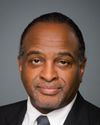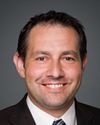Thank you, Mr. Chair.
I thank you for the opportunity to come here and think about Canada 2017. My remarks today are taken from a paper that I gave in July to the annual meeting of Canada's federal and provincial ministers of culture and heritage in Whitehorse. This is a much abbreviated version of that paper, which I have supplied to the committee.
I'm looking to start back in 1967 at the time of Canada's centennial celebrations, and to talk a little bit about how Canada has changed and suggest how I think we should think about what to do in 2017.
Our celebrations in 1967 had a major focus, Expo 67, at which I had the privilege of being the manager of the western Canada pavilion at the age of 21. In those days you could get jobs like that when you were just out of school from Alberta. Of course, Expo 67 was but a star attraction in a myriad of events and projects created to mark that centenary, many of them under the Centennial Commission, and many others coming up through the provinces and municipalities.
The centenary was a fervent mix of bottom-up and top-down projects. A lot of infrastructure was built, the National Arts Centre among other examples. We had a lot of good times. It was fun and productive, which is good to know when we don't have enough fun or are not productive enough.
But was it something more? Did the centennial and Expo 67, along with the new flag and medicare and the Canada Pension Plan, set the stage for a golden age of national unity and economic progress? Did Montreal vault into that league of international cities that we assumed it would at the time? Did our estranged regions and communities across Canada create new networks of understanding and shared purpose?
Unfortunately, the answer is no. Within three years of the centennial, we endured the extrasensory trauma of the October Crisis in Quebec, followed by the dramatic economic erosion of Montreal, a decade of national stagflation in the 1970s, not to mention shag carpets and bell bottoms and disco. We had the election of the Parti Québécois in 1976, a referendum on sovereignty association in 1980, and the dramatic intensification of western alienation, to the point of a separatist party arising in Alberta by 1980.
I think the question is, can our celebrations of 2017 make a more enduring contribution to the national project than the centennial of 1967, for all the latter's brilliance? I think so, if we act on the basis of two salient points, with a bias to looking towards the future.
The first of them is what I call the “Canadian equation”, which is the equation between land and people. Something has changed here in the last 50 years. Canadians have among the biggest claims on earth to the world's lands and oceans, and not just per capita but in terms of the sheer extent of this territory: about 7% of the global land mass is under our sovereignty. This creates a delight and a responsibility for its management that is global in depth and scope.
The grandeur of this space alone can be an enormous source of pride and commitment to Canada. Who else's nationality includes such potent and inspiring real estate? As the rest of the world's population scrabbles to live on more crowded and compromised lands, we retain a sense of Eden about our own.
What has changed in the last 50 years is the rampant degradation of ecosystems around the planet since 1967. We now realize here that competent management of our territory is of exploding significance to us and to the entire world. We are going to be famous in history, unavoidably, for how we manage the Canadian equation alone: very few people, much land, the capacity as rich people to do something about it.
To do it well, a great many more Canadians need to get out and actually experience the breadth and depth of the land. Most Canadians have no concept of the landscape of Canada, because they have never seen it.
The second salient fact since 1967 has to do with our human geography. In 1967, the Royal Commission on Bilingualism and Biculturalism realized that biculturalism was not a viable concept. Canada was clearly a multicultural country, which was officially recognized in 1971 with Mr. Trudeau's famous speech in Parliament.
Since then, multiculturalism, however, has grown dramatically. Several years ago, Statistics Canada published a report looking ahead to the nature of Canada's visible minority population in 2017. What did it say?
Amounting to some 7 million people—looking at 2017—these communities of predominantly Chinese, south Asian, black, Filipino, Latin American, southeast Asian, Arab, west Asian, Japanese, and Korean peoples will constitute 20% of our population. These communities are growing at six times the rate of the rest of the population. And 75% of these peoples are concentrated in the three cities of Montreal, Toronto, and Vancouver—and 95% of them in our cities as a whole. The more urban we are, the more multicultural we are. Even more striking is the fact that in 2017, fully 70% of these visible minorities will have been born outside of Canada. This is the highest proportion of foreign-born Canadians in the last 100 years.
One can say something qualitatively about these numbers. Newer immigrant communities are clearly more distinctive or different from mainstream Canada than in the past. Multiculturalism once referred to various ethnicities and peoples within the ambit of Europe, that is, the west. Now it refers overwhelmingly to peoples who come from different civilizations and religious traditions and values. They are visibly and culturally much more distinctive than earlier generations of immigrants from Europe. And they are likely to maintain that distinctiveness with unusual ease and passion, abetted by unbroken relationships with their homelands in the digital age.
At the same time, our aboriginal populations are emerging as more urban, self-confident, and participatory than we have ever known them to be.
This is a very significant change from 1967. The cultural differences among our communities and regions are deeper, the size of our minority communities is larger, and the concentration of different communities in certain suburbs or provinces is bigger. All of these trends are deepening. Canada is becoming multicultural with a capital G and a capital M, Global Multiculturalism.
How do we sustain shared commitment, knowledge, and familiarity among various communities in the country—a swath of common ground, if you will—so we do not become many more communities of others, not two solitudes but many?
Given the Canadian equation of land and people and the concentration of various communities in far-flung cities and regions, how do we give these groups a real appreciation for each other and for the country, for the landscape itself? How do we make this happen?
I believe that 2017 is a very good opportunity. One of the gaping truths about Canada is that very few of us know it, either in the sense of having physically experienced it or having come to actually know fellow Canadians of different cultural and regional backgrounds. Aristotle is the one who famously said that one's first sacred duty is to “know thyself”. We don't pass that test, as Canadians, in this country.
This is where I think we have an opportunity to create a transformational year in the development of our very surprising society, a celebration with unique and serious purpose. So here is my proposal.
With great energy and conviction, we need to mix up our communities and get those mixed up communities on the road together to experience each other and the country. We can envision a national mixer and mover, if you will, on a scale not before seen in any other country, social networking of a dimension and reality unparalleled anywhere. Diversity, yes, but diversity up close and on the road.
The goal is the creation of broader, deeper human networks, more shared values, more social trust, social networking, more knowledge and pride in the country, and more commitment to the health of our lands and oceans.
And so I would say that Canada's 150th anniversary should not be about things; it should be about relationships. It should not be about places; it should be about movement among places. It should not be about existing communities or groups; it should be about networking among communities and mixing up groups. It should not be about government defining a country; it should be about individuals and groups discovering their country and thereby redefining it themselves.
Imagine something like this. Under the title, “Mix-Up and Move Around”, the Canadian social network program, Know Thyself 2017, would fund an enormous variety of projects, exactly like the Glenn Gould Foundation proposal here--a huge variety of travel and schemes--on the condition that they mix up people by ethnicities, age, and other demographic qualities, and take them into parts of Canada they have not experienced before, sometimes even across a metropolitan region.
When I was at the ROM we brought a bunch of grade 4 school kids down from Jane-Finch. They came as a philanthropic thing. I met them as they got off the bus, and I said to the teacher, “These kids have never been to this museum”. She said, “Mr. Thorsell, most of these kids have never been downtown.” They didn't know they lived in a city like this. They didn't know they lived on water. They live in suburban Toronto. That's how bad it can get.
So under the title, “Mix-Up and Move Around”, we would support only the projects that come forward that mixed up people by demographics and got them out of their own backyards into other parts of the country. That would be the lens or filter by which we would assess them.
Former UN Secretary-General Javier Pérez de Cuéllar put it this way in 1991 when he gave his whole collection of mementos to the Canadian Museum of Civilization. I went to a dinner at the Prime Minister's house and I asked him, “You're a Peruvian diplomat. Why did you give all five years of your mementos from your time as Secretary-General to a Canadian museum?”. He said he had travelled the world and that Canada was the country that the rest of the world needed to become. By that, he was talking about our species of multiculturalism and living together.
We cannot be complacent about this. We must work intelligently and intensely to keep it true. The 150th birthday of the country gives us a perfect vehicle through all of these other groups who are looking for support. The goal of Canada 150 is neither immodest nor modest: We will enrich and deepen Canada's unique national character beyond the reach of cynicism or a reversal in hope for the world.
As a postscript to realizing that people often look for material projects anyway, these are not material projects. This is move, move, move, talk, talk, learn, see, experience, and then create a Facebook page to make sure these relationships develop forever in the next 10 or 15 years, instead of having Expo 67, the centennial, just fall off a cliff.
I have two short proposals for the federal government.
First, consistent with this, let's build an unforgettable bridge over the Ottawa River like those old bridges in Venice, Paris, and London that had buildings on them. It's would not be a bridge for cars, but would be accessible only to pedestrians, that is, a Bridge of Canadian Persons. Canada is made and changed by individuals like Glenn Gould, as well as by groups. Let that bridge include a contemporary version of a national portrait gallery, if you want to use that phrase, but with gathering places, performance spaces, restaurants, bars, and lookouts over the rushing waters and romantic spires. Let that bridge be both a fact and a metaphor, identifying and illuminating the individuals, not groups, that stand out in the creation of our society.
We are also part of this great geography. So consistent with Mix-Up and Move Around and getting to know each other and Know Thyself, the Government of Canada should complete, in full dress, the Trans Canada Trail project for Canada and inaugurate it on January 1, 2017. The Trans Canada Trail literally extends and completes that bridge of persons across the Ottawa River and mixes up and moves people around in a very intimate way, literally across the country.
So the Government of Canada would complete a perfect circle—there's only one kind of circle, a perfect circle—for Canada 150 by creating the biggest social networking experience in the history of any country. The rest of the world will be dumbfounded by this. By building a Bridge of Canadian Persons in a breathtaking structure over the Ottawa River and by tying it all up into the romantic Trans Canada Trail as an accessible national artery for mixing up and moving around....
Mixing up and moving around: Know Thyself. That's it.










